When we think of the largest creatures ever to walk the Earth, dinosaurs, particularly the sauropods, dominate the list. These herbivorous giants from the Mesozoic era, known for their enormous size, long necks, and massive tails, included some of the largest land animals ever known. Let's explore these colossal dinosaurs, ranked from the largest to smallest, starting with some that might surprise you.
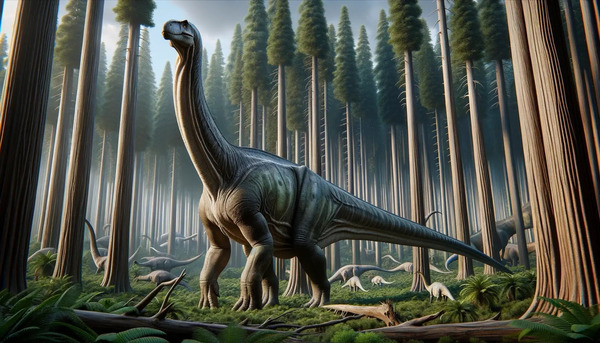
Argentinosaurus remains one of the largest dinosaurs ever discovered. This titanosaur, discovered in Argentina in 1993, is estimated to have been between 37 to 40 meters (121 to 131 feet) long and weighed between 90 to 100 metric tons (99 to 110 tons). Though no complete skeletons have been found, individual bones, such as vertebrae the size of an adult human, suggest that Argentinosaurus was the largest land animal to ever exist.
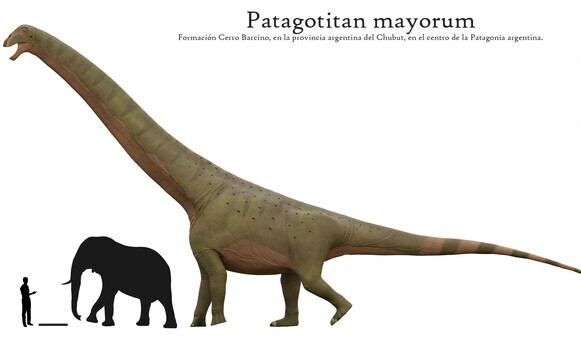
Patagotitan mayorum, also from Argentina, rivals Argentinosaurus in size and was discovered in 2014. This dinosaur could have reached a length of up to 37 meters (122 feet) and weighed about 70 metric tons (77 tons). While some researchers believe these size estimates might be exaggerated, Patagotitan is still considered one of the largest terrestrial animals known, with a femur alone measuring 2.4 meters (8 feet).

Puertasaurus reuili, another titanosaur from Argentina, could have measured up to 35 meters (115 feet) long. While not as well known as Argentinosaurus or Patagotitan, Puertasaurus is remarkable for its size, though exact weight estimates are difficult due to the incomplete nature of the fossil remains. Some scientists estimate it weighed around 70 metric tons (77 tons).
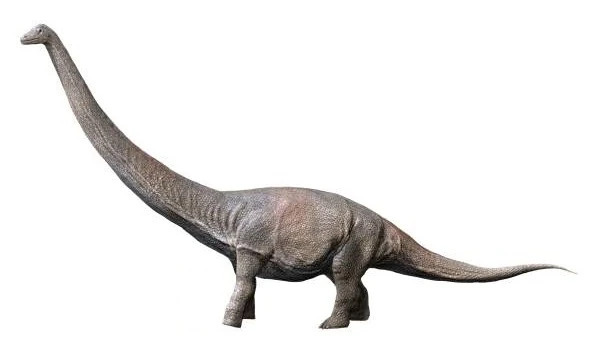
Discovered in 2009 in Patagonia, Dreadnoughtus schrani is one of the most complete giant titanosaur skeletons ever found. At an estimated 26 meters (85 feet) in length and weighing around 59 metric tons (65 tons), it might not be the absolute largest dinosaur, but it earns its place among the giants. Dreadnoughtus means “fear nothing,” an apt name for such a massive animal.
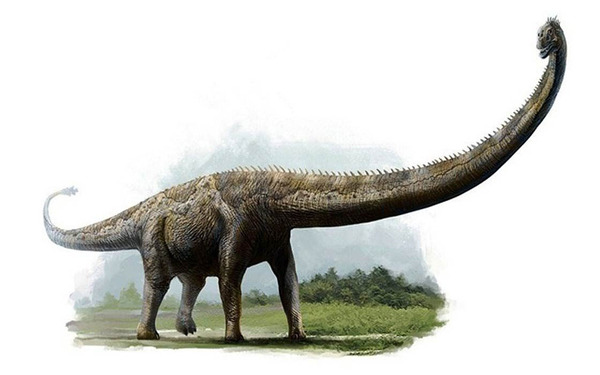
Moving away from the titanosaurs, Mamenchisaurus was a large sauropod from China, known for its incredibly long neck. Some specimens suggest it could have reached lengths of 35 meters (115 feet), with its neck making up about half of its body length. Though its body mass, estimated at around 50 metric tons (55 tons), was not as immense as some titanosaurs, its long neck made it one of the longest dinosaurs.
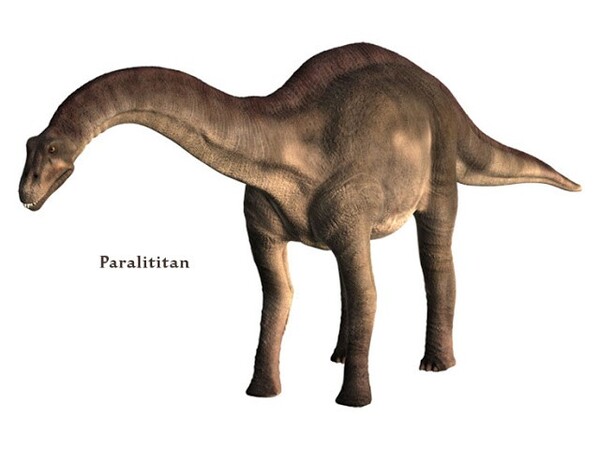
Discovered in Egypt, Paralititan stromeri lived in the mangrove swamps of North Africa about 94 million years ago. This massive dinosaur could have been up to 30 meters (100 feet) long and weighed between 60 to 75 metric tons (66 to 83 tons). Its name means “tidal giant,” reflecting the coastal environment where it lived.
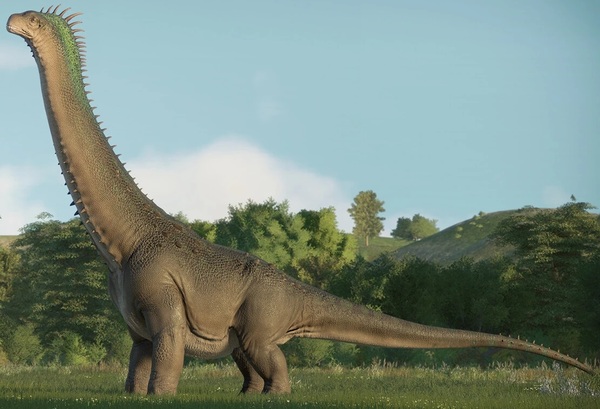
One of North America’s largest dinosaurs, Alamosaurus was a late Cretaceous titanosaur. Estimates of its size suggest it could have reached lengths of up to 30 meters (100 feet) and weighed around 70 metric tons (77 tons). Fossils of Alamosaurus have been found in Texas, New Mexico, and Utah, making it one of the last giant dinosaurs to roam North America before the mass extinction.
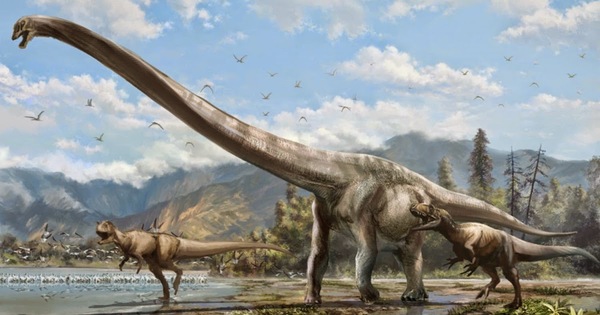
Australposeidon magnificus was Brazil’s largest titanosaur, measuring about 25 meters (82 feet) long. It lived between 84 and 66 million years ago, just before the Cretaceous mass extinction. Its partial remains were discovered near São Paulo and formally described in 2016, over 60 years after their discovery.
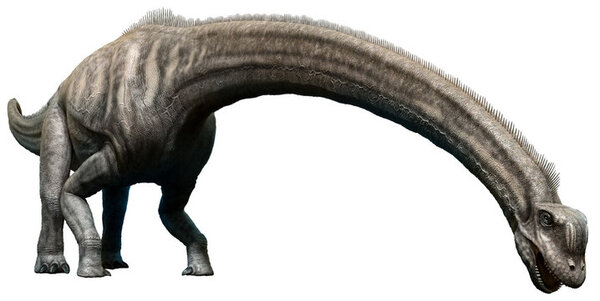
Named for its incredible height, Sauroposeidon was a sauropod that could have reached up to 34 meters (112 feet) in length, with its neck towering over the landscape. Found in North America, this dinosaur lived during the early Cretaceous period, around 110 million years ago. Although it may not have been as heavy as some titanosaurs, it is considered one of the tallest dinosaurs, standing up to 18 meters (60 feet) tall when its neck was fully raised.

Among the smallest titanosaurs, Shingopana songwensis was only about 8 meters (26 feet) long and weighed around 5 metric tons (5.5 tons). Discovered in Tanzania, its fossils date back between 100 and 70 million years. Despite its small size compared to other titanosaurs, Shingopana had distinctive, wide-necked vertebrae that gave it its name, meaning "wide neck" in Swahili.
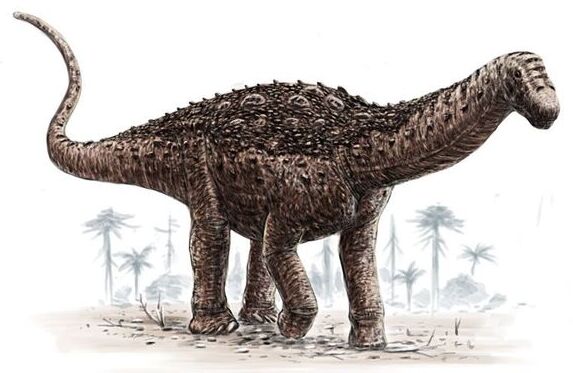
Saltasaurus, discovered in northern Argentina, was another smaller titanosaur. Measuring only about 12 meters (40 feet) in length and weighing roughly 7 metric tons (7.7 tons), it stood out for its body armor, which consisted of bony plates called osteoderms. This protective layer helped defend Saltasaurus against predators in a unique way, unlike its larger relatives, which relied more on their sheer size for protection.
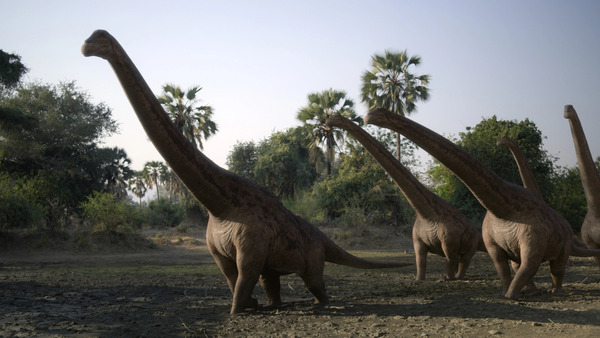
Rapetosaurus krausei, discovered in Madagascar in 1998, was a medium-sized titanosaur. Adults are estimated to have grown up to 15 meters (49 feet) in length, and the juvenile skeleton that was found provides invaluable insights into how these dinosaurs grew and developed. It lived about 70 million years ago, close to the time of the dinosaurs' mass extinction.
From the massive Argentinosaurus to the smaller but well-armored Saltasaurus, the dinosaur world was home to creatures that pushed the limits of size on land. These titans, many of them towering over modern animals in both length and mass, provide a glimpse into an ancient world where size was one of nature's most powerful adaptations. While many questions about their lives and biology remain, the fossils of these incredible animals continue to awe and inspire us today.
animal tags: Dinosaurs
We created this article in conjunction with AI technology, then made sure it was fact-checked and edited by a Animals Top editor.